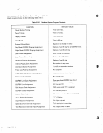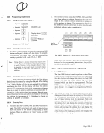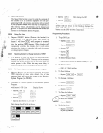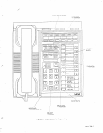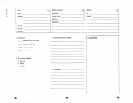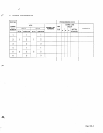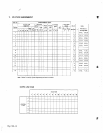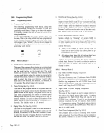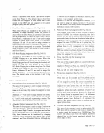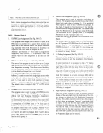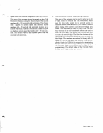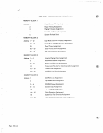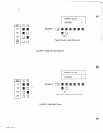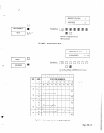
340 Programming !%eets
340.1
Programming Details
1.
Programming Work Sheets
The following programming work sheets, along with
the programming overlays are intended to ease pro-
gramming work sheets, if kept up to date with respect
to program changes, can also be used as record of ex-
isting installation.
In the following pages the words “default value” will
be seen. This is the value which has been programmed
in the Resident System Program and is the value which
will remain if you “default”, (if you do not change the
value). The following symbols are also seen in the pro-
gramming work sheets:
Kl
LED
LED
OFF ON
340.2
Memory
Block ‘I
3.
Recall Button Timing (See Fig. 340-l)
This area of the program allows choice on a system basis
of how long the disconnect signal produced by depress-
ing the recall button on the keysets last. The recall
button can be used for “flashing” when behind a PBX
or as a recall button when the system is connected to
Central Office lines. Address 1 is the memory location
used to select this tire-out. Buttons 7 and 8 offer
time outs of 0.4 seconds, 0.6 seconds, 1.0 seconds, or
1.5 seconds. The defau!t value is 0.4 seconds.
Pause Timing (See Fig. 340-2)
This area of the program selects on a system basis the
duration of the pause interval by the depression of the
pause button on the keyset. The pause button can be
used when programming for station or system speed
dialing where intervals between dialing patterns may be
desired. Address 2 is used to select the duration of the
pause. Button 8 offers a duration of 1.0 second or 3.5
seconds. The default value is 1.0 second.
Paging Time -Out (See Fig. 340-3)
This area of the program is used to set the duration of
internal and external paging. Possible values are 30
seconds, 90 seconds, or no time out. Address 3 is used
to select the duration of paging. Buttons 7 and 8 select
the time out value. The default value is 60 seconds.
4. Hold Recall Timing (See Fig. 340-4)
This area of the programming provides for selecting the
length of time before recall of non-exclusive held calls
and of exclusively held calls. Tne time-out on hold
doesn’t begin until the telephone handset is returned
to the’cradle. Address 4 is used to select the timing.
Buttons 7 and 8 are used to select one of the time-outs.
The default value for hold recall is 60 seconds.
5. System Refresh Basis (See Fig. 34G-5)
System refresh (a “cleaning” of system RAM to
remove any false data caused by AC voltage problems
or other causes) can be set to begin after one of two
conditions have been met for
a
period of approxi-
mately five hours.
1) There is no change in status; devices may be
busy but no new activity has taken place in ap-
proximately five hours.
2) All stations have been idle; all stations have been
“ON HOOK” for approximate!y five hours.
Address 5 is used to program this choice of system
refresh basis. Button 8 is used in a either/or mode to
select the style of refresh. The default value is no
change is status.
340.3 Memory Block 2
1
Day Mode CO/PBX Ringing Xssig:ment
” (See Fig. 340-6)
This area of memory uses 12 addresses. Each CO/PBX
line uses 2 addresses for ring assignments. This allows
flexible ring assignment for all CO/PBX lines. Each
address uses 8 buttons: each one corresponds to a sta-
tions 1 and 9 ring for all CO/PSX lines.
2. Night Mode CO/PBX Ringing Assi~ment
(See Fig. 340-7)
This area of the program is used to assign stations to
ring when the system enters night mode. A station
programmed for Night Mode Ring will ring for all 6
COjPBX lines. Addresses 13 and 14 are the assigned
memory locations for all 16 stations. Each button
1 - 8 represents a station. The default value is stations
1 and 9 which ring for all CO/PBX lines. When the sys-
tern is in night mode.
3. Door Phone Assignment (See Fig. 340-8)
This program area is used in enabling Door Phones
when connected. Two Door Phones can be installed in
the system. Address IS is used to assign this opticn.
6
:---
Page 300-12



